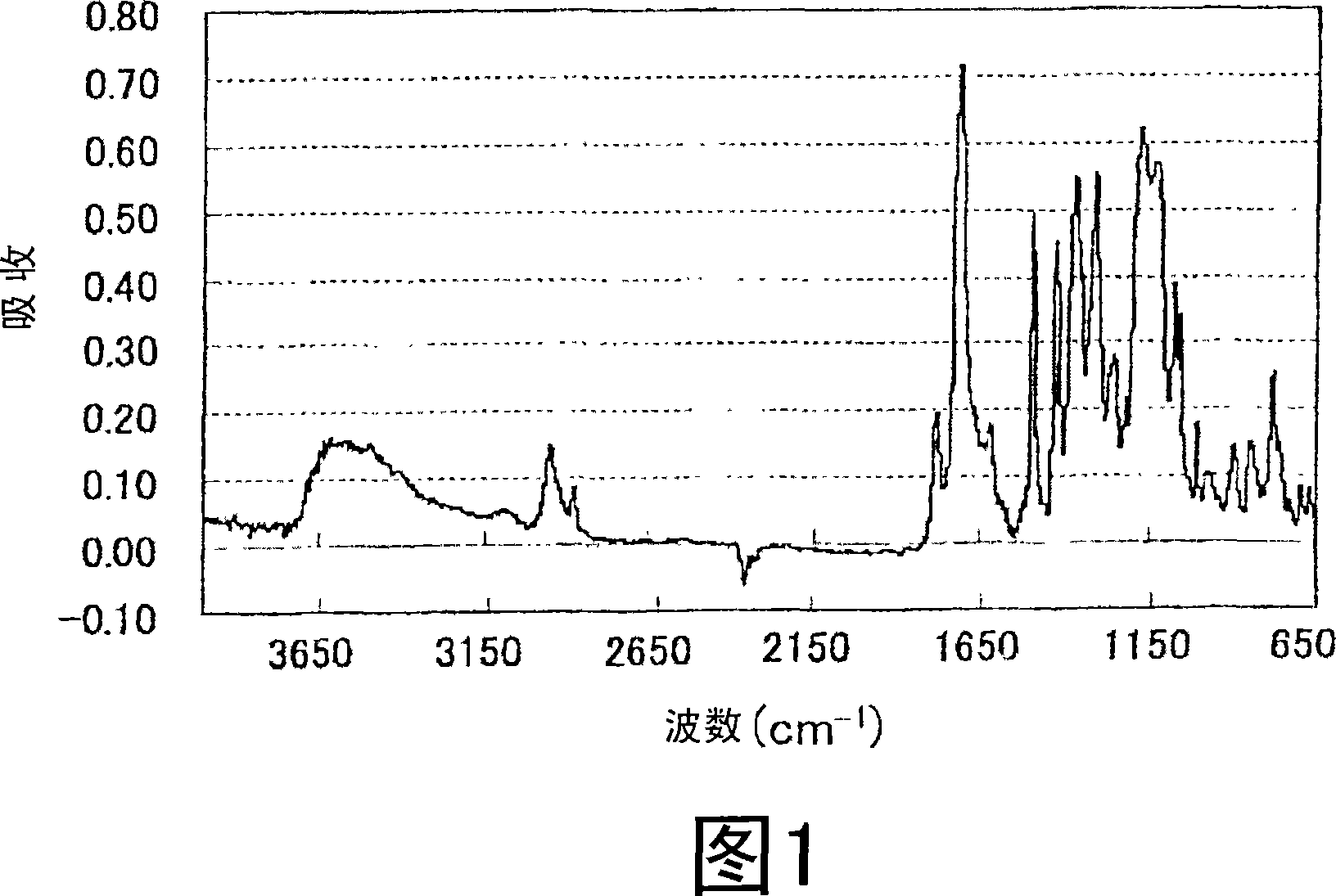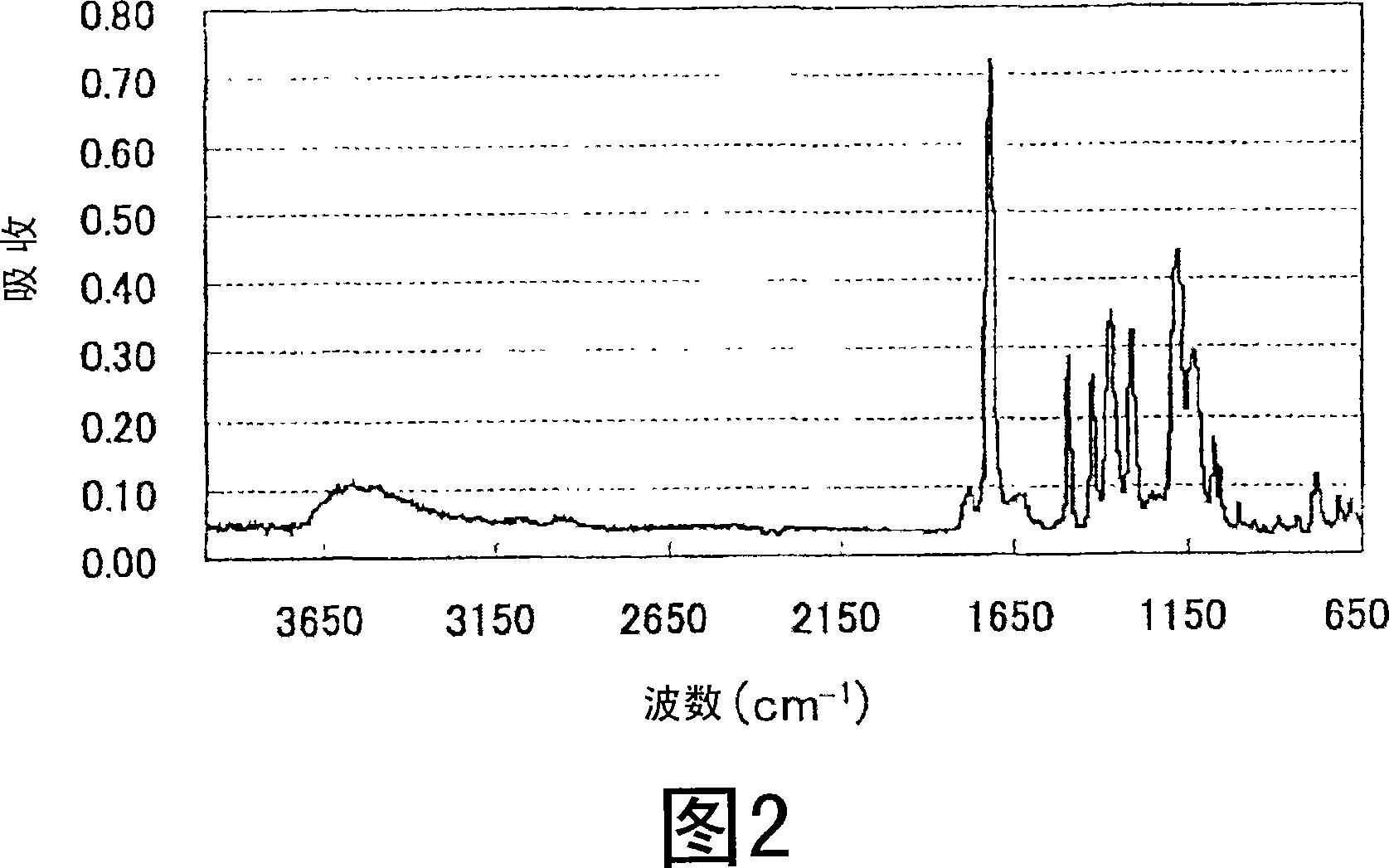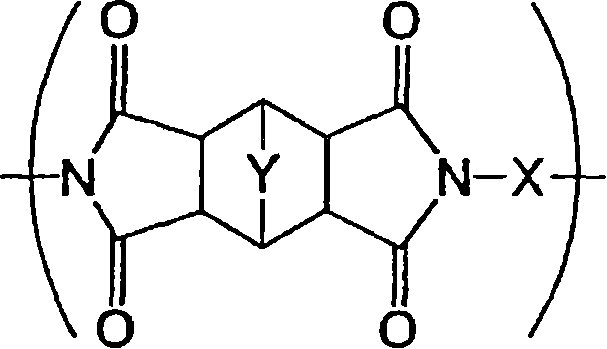Polymer, method for producing the polymer, optical film, and image display device
A technology of optical film and polymer, applied in optics, instruments, optomechanical equipment, etc., can solve the problems of unobtained optical film and unsatisfactory heat resistance, and achieve low thermal expansion, good optical performance, good durability thermal effect
- Summary
- Abstract
- Description
- Claims
- Application Information
AI Technical Summary
Problems solved by technology
Method used
Image
Examples
Embodiment 1
[0111] 1. Film preparation:
[0112] (1) Preparation of film P-1:
[0113] Put 32 g of 2,2'-bis(trifluoromethyl)-4,4'-diaminobiphenyl into a reactor equipped with a thermometer, a stirrer and a nitrogen introduction tube, and dissolve it in 230 g of N -Methyl-2-pyrrolidone. Then, 25 g of bicyclo[2.2-2]octane-2,3,5,6-tetracarboxylic acid was gradually added thereto at 15°C. It was allowed to react at 30°C for 1 hour, then at 70°C for 1 hour, and then at 100°C for 1 hour, thus obtaining a transparent solution. Next, as additives, 6.2 g of triphenyl phosphite and 16 g of pyridine were gradually added dropwise to the solution, which was stirred at 100°C for 0.5 hours, then at 130°C for 0.5 hours, and at 150°C for 0.5 hours and stirred at 170°C for 5 hours. Next, the resulting solution was kept cooled, and then it was reprecipitated in a mixed solution of 2 liters of methanol and 2 liters of water to obtain a polymer. It was filtered, the sediment was dried and redissolved in ...
Embodiment 2
[0136] [Example 2] Preparation of stretched film:
[0137] 1. Uniaxial stretching:
[0138] In order to confirm the fact that the stretched polymers of the invention show greatly reduced thermal expansion, the polymers of the invention were stretched.
[0139]
[0140] A film sample (2.0 cm x 7.0 cm sheet) was prepared and uniaxially stretched using tensilon (Orientec's Tensilon RTC-1210A) at a stretching speed of 200 mm / min. Three samples were tested in one experiment and their data were averaged. (The chuck to chuck distance was 5 cm and the draw ratio was 1.3 times.)
[0141] Polymer P-1 was dissolved in N,N-dimethylacetamide at a ratio of 20% by mass to prepare a dope. It was cast on a glass plate using a spatula and dried at 80°C. Before drying completely, it was peeled off from the glass plate, cut into 20mm x 70mm pieces, and stretched with tensilon. Stretching conditions were as follows: a resin temperature of 250° C., a stretching speed of 200 mm / min, a distanc...
Embodiment 3
[0148] [Example 3] Formation of gas barrier layer and transparent electrode layer:
[0149] 1. Formation of gas barrier layer:
[0150] According to the DC magnetron sputtering method, oxygen was introduced into the chamber in an Ar environment under a vacuum of 500 Pa at the same time, and the target Si was sputtered onto the optical thin film samples P-1, P-2, P-21 and P- 22 on both surfaces. The pressure is 0.1Pa, and the output power is 5kW. Thus, a gas barrier layer was formed with a thickness of 60 nm. The water vapor permeability of an optical film sample having a gas barrier layer formed on both surfaces thereof is at most 0.1 g / m measured at 40°C and a relative humidity of 90% 2 day; and an oxygen permeability of at most 0.1 ml / m, measured at 40°C and 90% relative humidity 2 ·sky.
[0151] 2. Formation of transparent conductive layer:
[0152] While heating the optical thin film sample coated with the gas barrier layer at 300 ° C, according to the DC magnetron s...
PUM
| Property | Measurement | Unit |
|---|---|---|
| glass transition temperature | aaaaa | aaaaa |
| thickness | aaaaa | aaaaa |
| thickness | aaaaa | aaaaa |
Abstract
Description
Claims
Application Information
 Login to View More
Login to View More - R&D
- Intellectual Property
- Life Sciences
- Materials
- Tech Scout
- Unparalleled Data Quality
- Higher Quality Content
- 60% Fewer Hallucinations
Browse by: Latest US Patents, China's latest patents, Technical Efficacy Thesaurus, Application Domain, Technology Topic, Popular Technical Reports.
© 2025 PatSnap. All rights reserved.Legal|Privacy policy|Modern Slavery Act Transparency Statement|Sitemap|About US| Contact US: help@patsnap.com



